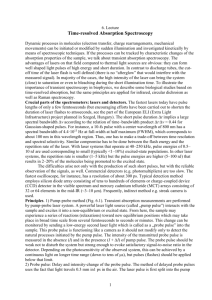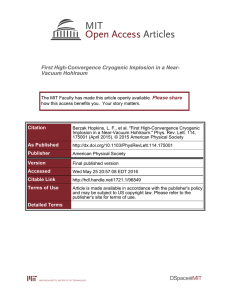computational optimization of indirect
advertisement
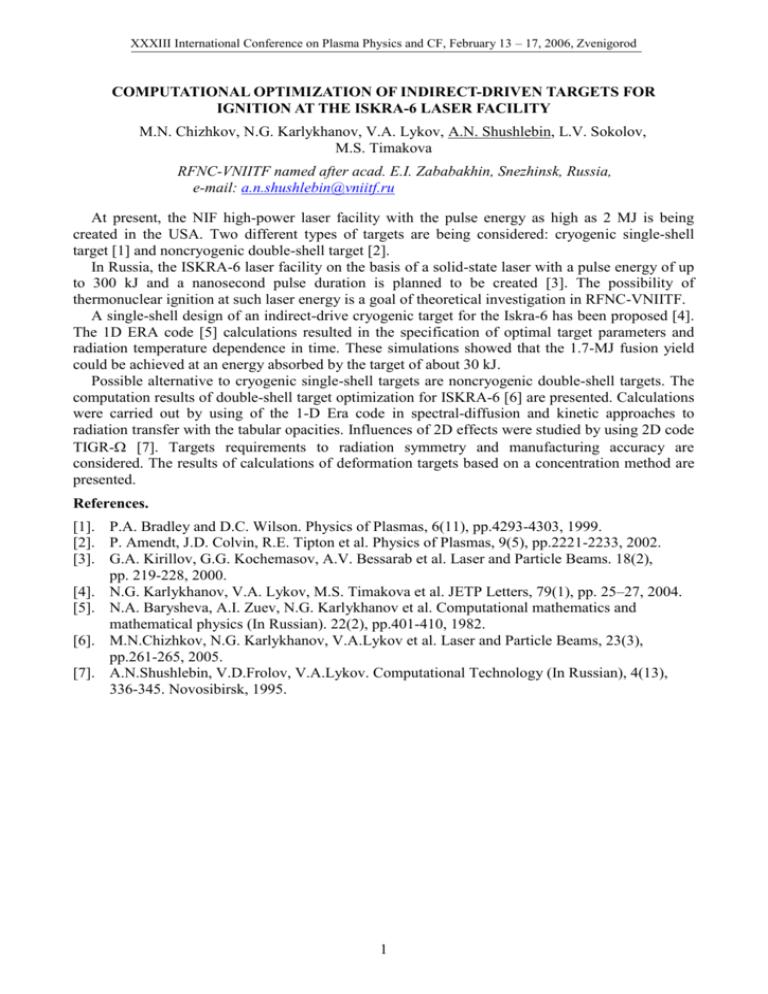
XXXIII International Conference on Plasma Physics and CF, February 13 – 17, 2006, Zvenigorod COMPUTATIONAL OPTIMIZATION OF INDIRECT-DRIVEN TARGETS FOR IGNITION AT THE ISKRA-6 LASER FACILITY M.N. Chizhkov, N.G. Karlykhanov, V.A. Lykov, A.N. Shushlebin, L.V. Sokolov, M.S. Timakova RFNC-VNIITF named after acad. E.I. Zababakhin, Snezhinsk, Russia, e-mail: a.n.shushlebin@vniitf.ru At present, the NIF high-power laser facility with the pulse energy as high as 2 MJ is being created in the USA. Two different types of targets are being considered: cryogenic single-shell target [1] and noncryogenic double-shell target [2]. In Russia, the ISKRA-6 laser facility on the basis of a solid-state laser with a pulse energy of up to 300 kJ and a nanosecond pulse duration is planned to be created [3]. The possibility of thermonuclear ignition at such laser energy is a goal of theoretical investigation in RFNC-VNIITF. A single-shell design of an indirect-drive cryogenic target for the Iskra-6 has been proposed [4]. The 1D ERA code [5] calculations resulted in the specification of optimal target parameters and radiation temperature dependence in time. These simulations showed that the 1.7-MJ fusion yield could be achieved at an energy absorbed by the target of about 30 kJ. Possible alternative to cryogenic single-shell targets are noncryogenic double-shell targets. The computation results of double-shell target optimization for ISKRA-6 [6] are presented. Calculations were carried out by using of the 1-D Era code in spectral-diffusion and kinetic approaches to radiation transfer with the tabular opacities. Influences of 2D effects were studied by using 2D code TIGR- [7]. Targets requirements to radiation symmetry and manufacturing accuracy are considered. The results of calculations of deformation targets based on a concentration method are presented. References. [1]. P.A. Bradley and D.C. Wilson. Physics of Plasmas, 6(11), pp.4293-4303, 1999. [2]. P. Amendt, J.D. Colvin, R.E. Tipton et al. Physics of Plasmas, 9(5), pp.2221-2233, 2002. [3]. G.A. Kirillov, G.G. Kochemasov, A.V. Bessarab et al. Laser and Particle Beams. 18(2), pp. 219-228, 2000. [4]. N.G. Karlykhanov, V.A. Lykov, M.S. Timakova et al. JETP Letters, 79(1), pp. 25–27, 2004. [5]. N.A. Barysheva, A.I. Zuev, N.G. Karlykhanov et al. Computational mathematics and mathematical physics (In Russian). 22(2), pp.401-410, 1982. [6]. M.N.Chizhkov, N.G. Karlykhanov, V.A.Lykov et al. Laser and Particle Beams, 23(3), pp.261-265, 2005. [7]. A.N.Shushlebin, V.D.Frolov, V.A.Lykov. Computational Technology (In Russian), 4(13), 336-345. Novosibirsk, 1995. 1






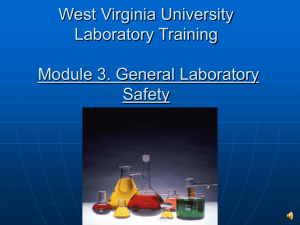
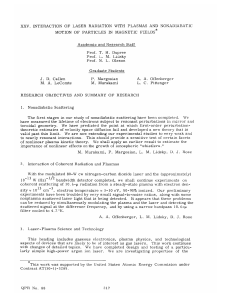
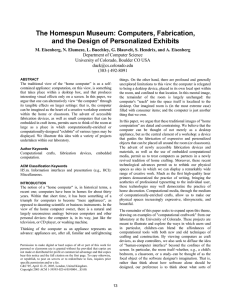
![Diode-Pumped Cryogenic Yb[superscript 3+]:YLF Laser of Please share](http://s2.studylib.net/store/data/012428662_1-3022971fed2cec5a7b1af5ecde7c78d9-300x300.png)
